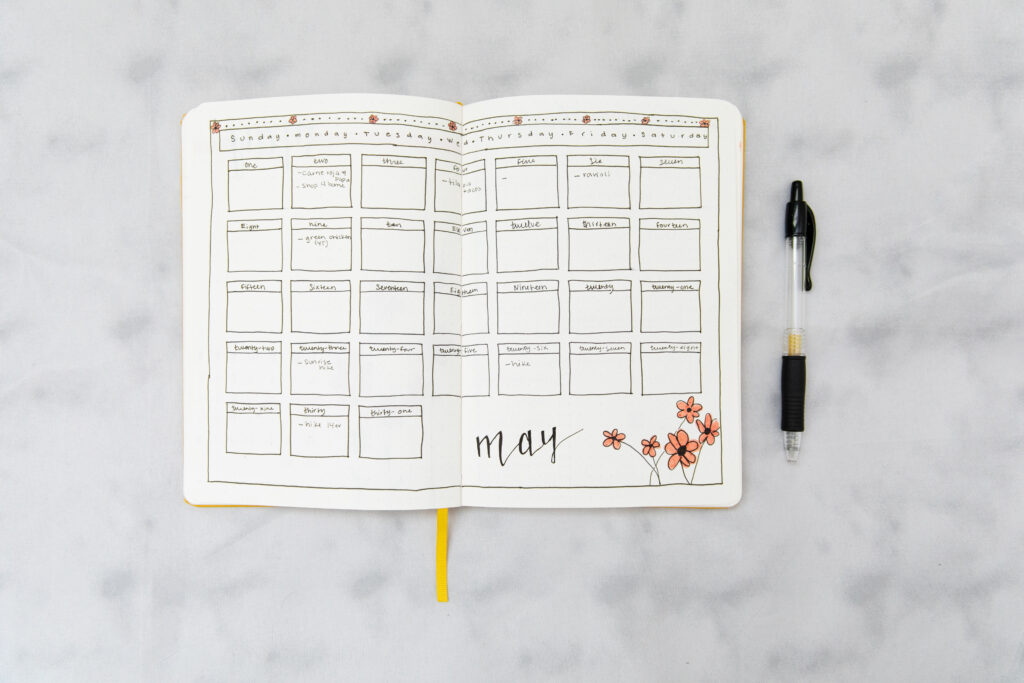
Journaling has always been a popular way to keep track of your life, but with the advent of bullet and dot journals, it has transformed into an art form that combines organization with creativity. Many people wonder whether bullet journals and dot journals are the same, and how to use them effectively. This post will explore the similarities and differences between the two, provide tips on how to maintain them, and highlight their benefits.
Bullet Journals vs. Dot Journals: Understanding the Difference
Bullet Journals
Developed by Ryder Carroll, a bullet journal (often abbreviated as ‘BuJo’) is a method of personal organization. It involves a system of rapid logging, using symbols to categorize items into tasks, events, and notes. The bullet journal system is highly customizable, allowing users to create their own layouts and incorporate various tracking methods like habit trackers, mood trackers, and more.
Dot Journals
A dot journal, on the other hand, is more of a type of notebook rather than a method. These journals are characterized by pages dotted in a grid pattern, which provide guidance for both writing and drawing without the interference of solid lines or grids. While dot journals are often used for bullet journaling due to their flexible layout, they can be used for various purposes including sketching, taking notes, or creating graphic layouts.
Tips for Keeping a Bullet/Dot Journal
Start with the Basics
If you’re new to bullet or dot journaling, start with the essentials: an index, a future log, a monthly log, and a daily log. The index helps you keep track of your content, while the future log is for events or tasks that are several months away. Monthly logs give an overview of the current month, and daily logs are for day-to-day tasks and events.
Personalize Your Journal
The beauty of bullet and dot journals lies in their customizability. Add pages that cater to your lifestyle, such as meal planners, budget trackers, or reading lists. Use colors, stickers, and washi tape to make your journal visually appealing and enjoyable to use.
Keep It Functional
While it’s tempting to create elaborate layouts, remember that the primary goal of these journals is to enhance productivity and organization. Don’t get too caught up in the aesthetics that you lose sight of functionality.
Review and Reflect
Regularly go back through your journal to review your progress. Reflect on what’s working for you and what isn’t. This practice helps you to stay focused and make necessary adjustments to your journaling method.
Benefits of Keeping a Bullet/Dot Journal
Enhanced Organization
Both bullet and dot journals provide a structured way to organize your life. You can keep track of appointments, to-dos, and deadlines all in one place.
Boosts Productivity
By setting goals and tracking your progress in a journal, you can increase your productivity. The act of writing down tasks also makes you more likely to complete them.
Encourages Creativity
Bullet and dot journals offer a creative outlet. You can experiment with different layouts, doodle, and personalize your journal to your heart’s content.
Mindfulness and Mental Clarity
Journaling is a meditative practice that can help in reducing stress. It encourages mindfulness and helps clear your mind by getting thoughts and tasks down on paper.
Flexibility
Unlike pre-formatted planners, bullet and dot journals offer the flexibility to change your layout and content as your needs and preferences evolve.
Whether you choose a bullet journal, a dot journal, or a combination of both, the key is to find a system that works for you. These journals are more than just planners; they are tools for self-expression, organization, and personal growth. Start simple, be consistent, and watch as your journal evolves into a reflection of your unique journey through life.